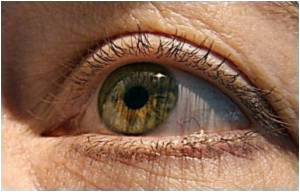
Currently, when optometrists and ophthalmogists visualize the ocular fundus, they typically take snapshot images of the eye in two or three wavelengths (red, green and blue), which can reveal some visually-apparent abnormalities. But an added dimension made possible with the imaging system described by Nicholas L. Everdell of University College London allows doctors to distinguish between the different light absorbing characteristics of biological molecules called chromophores.
According to the paper's coauthor Iain Styles of the University of Birmingham, five of these light-absorbing compounds are prevalent in the eye: retinal hemoglobins, choroidal hemoglobins, choroidal melanin, RPE (retinal pigment epithelium) melanin, and macular pigment. In a separate paper (Medical Image Analysis 10 (2006) 578�), Styles said that each of these has been shown to give rise to distinct variations in tissue coloration that can be discriminated in multispectral images.
In the new work, Everdell and Styles describe a device combining a high-sensitivity CCD camera with wavelength-specific illumination from LEDs (light-emitting diodes) that provides multispectral images of the ocular fundus. The multispectral images, explains Styles, are affected differently by the pigments present in the eye, and through a sophisticated algorithm they can be used to generate a pixel-by-pixel "parametric map" of the distribution of substances in the eye. Such maps may allow primary care clinicians to screen for and identify pathologies at a much earlier stage of development than other imaging modalities.
An advantage the new system offers over other multispectral retinal imaging systems is its speed. It can acquire a sequence of multispectral images at a fast enough rate (0. 5 seconds) to reduce image shifts caused by natural eye movements. In contrast with snapshot systems, the system's images retain full spatial resolution. Also, the system uses only the specific wavebands that are required for the subsequent analysis, minimizing the total light exposure of the subject, ensuring patient safety and improving image quality.
"The long term goal," Everdell said, "is to develop a system for chromophore quantification that is an integral part of the standard fundus camera, and therefore could be used routinely by both optometrists and opthalmologists."
Advertisement
Source-Eurekalert









